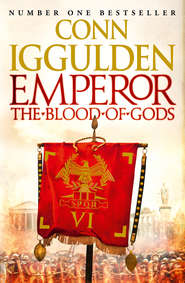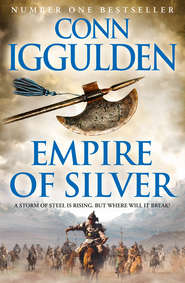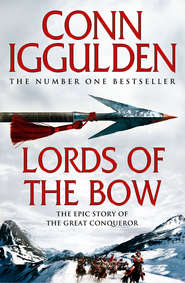По всем вопросам обращайтесь на: info@litportal.ru
(©) 2003-2024.
✖
The Dangerous Book for Boys
Настройки чтения
Размер шрифта
Высота строк
Поля
In the rugby version of the game, tries are scored rather than goals, and they are worth five points. The scorer then has an opportunity to gain two more points by converting the try. This is difficult, to say the very least.
1. The opposing player rearranges his goal into a rugbypost formation.
2. The goal or shooter coin must first be spun in place. As it spins, the coin must be gripped as shown in the picture and flipped over the posts in one smooth motion. No hesitation is allowed for aiming. This is not at all easy to do, which is as it should be.
3. Play to an agreed number, or perhaps to win the coins.
Fishing (#ulink_6a97bfbf-92a4-582a-813f-a86e22413cd6)
FISHERMAN ARE NOT PATIENT. Anticipation and concentration can make fishing an exhausting sport. It is a mainly solitary occupation. You hardly ever see people fishing in groups, laughing and chatting with each other, or drinking alcohol and singing. Fishermen can spend the day in silence. Even if you never catch anything, lazy afternoons spent fishing in the summer can be relaxing, rewarding – and addictive.
A simple starter kit – a rod, bait, a float, a lead weight and a hook – can be put together for about £30. As a legal requirement, you’ll also need to purchase a rod licence, available at any post office. You have the choice of a day, week or annual licence costing up to around £25 – though a salmon and sea trout licence is more than double that. Note that you do not need a licence if you are under twelve. Twelve to sixteen-year-olds can buy a ‘junior’ version which is cheaper than adult ones.
The local fishing shop will have the equipment and also be able to tell you if there are free fishing grounds nearby. Most towns have a stretch where no extra fees are required. The largest is in London between London Bridge and Staines. Richard I gave it to the citizens of London and it has remained free ever since.
Otherwise, any canal or good-sized freshwater river will do. You may be asked to pay a small extra fee for a day’s permit. If expensive fish like trout or salmon are involved, you will almost certainly be asked to show your rod licence and be required to get the owner’s permission. Technically, fishing cannot be poaching as fish are ferae naturae – wild animals. However, if you don’t obtain permission, you can be prosecuted for trespass and fishing without a licence. A water bailiff also has the right to confiscate your equipment but, again, not the fish you have caught.
The classic fishing method is with a float. Maggots from bluebottle or greenbottle flies are spiked on a hook suspended from a float that bobs on the surface. Push the hook through the blunt end of the maggot, taking care not to burst it, as it dies faster. It tends to be necessary to place a couple of ball lead weights on the line to keep the float upright. Ask in the fishing shop if you’re not sure how.
Cast carefully as a hook catching in your eyebrow is a deeply unpleasant experience. Watch out for overhead cables or tree branches. Your spool will have two settings – one for casting and one for retrieving the hook. Allow it to run loose and cast the hook and float upstream and allow the hook to come downstream towards you in the current. The first moment when that float dips is an experience to be treasured. Otherwise, wind back in slowly and try it again, replacing your maggots when they no longer move. If it’s a nice day, find a place to sit and enjoy the peace that lasts until someone comes along and says, ‘Any luck?’
The second classic method is known as ‘ledgering’. It involves a heavier lead weight that keeps the hook on the bottom. Fish taking the bait feel no resistance. This works well with carp.
It should be clear that the method depends on the fish. Pike and perch tend to attack injured or dying fish. As a result, they can be caught using a ‘spinner’, a device that resembles a wounded fish as it moves through the water. Many anglers use complex lures that mimic insects on the surface. For a beginner, though, you’d hope to catch one of the following:
Roach (Rutilus rutilus). The ideal beginner’s fish. Roach feed in all conditions, at all levels, in summer and winter. Found in lakes, ponds, rivers and canals in England, Scotland, parts of Wales and Ireland. They are not large – a pound roach would be a reasonable catch.
Tench (Tinca tinca). A member of the carp family. Golden brown to olive green in colour, more likely to take the bait in warm weather. Usually found in deeper water – ponds, weirs and lakes. They can range in weight from a couple of pounds up to six or seven, though it would have to be deep water such as a gravel-pit lake for them to grow as large as that.
Chub (Leuciscus cephalus). Found in rivers fast and slow, under overhanging banks, rafts of waterweed and any other shelter. Omnivorous, chub will take almost any bait. They are common at around 5 lb in weight.
There is also a good chance of you picking up ‘small fry’ – fish no larger than a thumb that are used either as live bait for pike and perch, or thrown back. In the UK, these are:
Gudgeon. A small bottom feeder, found everywhere.
Stickleback. An even smaller fish with harmless spines. Often caught in nets by very small children.
Minnows. The tiny fish whose name has actually come to mean ‘small and insignificant’.
There are too many other types to include here – the rivers and lakes teem with them.
‘Game fishing’ is a specific reference to the salmon family: salmon, trout, char and grayling. ‘Coarse’ fish have five fins – ventral, anal, dorsal, pectoral and caudal. Members of the salmon family all have one extra fin close to the tail – known as the adipose fin. Salmon are born from eggs laid in rivers and swim to the sea, where they live for one to three years. After that, they return by instinct to the river where they were born to breed, in what is known as the ‘spawning season’. They are caught as they travel upstream, with a lure containing a hook.
Catching a fish can be exciting – the real skill is not in hooking one but in bringing it in without breaking the line or losing the fish. As a final note, try reading the classic fishing tale by Ernest Hemingway – The Old Man and the Sea. Happy fishing.
Timers and Tripwires (#ulink_6f271fa0-2091-567b-8ae1-87a0ceec92ba)
You will need
An old alarm clock.
Bulb.
Two pieces of insulated electrical wire with bare copper ends.
Adhesive tape.
A battery – C or D size.
These are very simple to make – and deeply satisfying. For the timer, any wind-up alarm clock will do – preferably one with plastic hands. The idea is to use the clock to complete a circuit and turn on a light. You want the bulb to turn on in twenty minutes – to win a bet perhaps, or to frighten your little sister with the thought that a mad axe murderer is upstairs.
First, remove the plastic front of the clock. Tape wire to each hand, so that when one passes under the other, the bare ends will touch. It should be clear that a circuit can now be made with a time delay of however long it takes the minute hand to travel around and touch the hour hand.
Attach one of the wires to a positive battery terminal. Tape a torch bulb to the negative terminal and the end of the other wire to the end of the bulb. Test it a few times by touching the hands of the clock together. The bulb should light as the wires on the hands touch and complete the circuit.
Bear in mind that the hour hand will have moved by the time the minute hand comes round, so it’s worth timing how long it takes for the bulb to light after setting the minute hand to, say, fifteen minutes before the hour. You can then terrify your young sister with the tale of Hamish McGee, the butcher of Margate.
TRIPWIRE
This is almost the same thing, in that it uses a battery circuit with a bulb linked to a switch – in this case a tripwire. With a long enough wire, the bulb can be lit some way from the actual trip switch for longer warning times.
You will need
Clothes peg.
Wine cork.
Tin foil.
Fishing line or string.
Battery, bulb and insulated wire, as with the timer set-up.
Adhesive tape.
Wrap foil around the ends of the wooden or plastic clothes peg. Attach your wires with tape to those foil ends, running both to exactly the same battery and bulb set-up as the alarm-clock switch above.
The important thing is to have a non-conducting item between the jaws of the clothes peg. We found a wine cork worked quite well. The wire itself must also be strong enough to pull the cork out – if it snaps, the bulb won’t light. Fishing wire is perfect for this as it’s strong and not that easy to see. It is also important to secure the clothes peg under a weight of some kind. Only the cork should move when the wire is pulled.
When the cork is pulled out, the jaws of the peg snap shut, touching the foil ends together, completing the circuit and lighting the bulb to alert you.
This works especially well in long grass, but its main disadvantage is that whoever trips the switch tends to know it has happened. Enemy soldiers would be put on the alert, knowing they were in trouble. Of course, in a real conflict, the wire would have pulled out the pin to a grenade.
PRESSURE PLATE
One way of setting up a trip warning without the person realising is with a pressure plate. Again, this relies on a simple bulb circuit, but this time the wires go to two pieces of cardboard held apart by a piece of squashable foam such as you might find in children’s toy letters. A bit of sponge would also be perfect.
This time, tape foil squares over the bare ends of the wires on the inner surfaces of the cardboard and set up a simple bulb and battery circuit as before. With only light pressure from above, the two bits of cardboard come together, bringing the foil squares into contact. The circuit is made and the warning bulb comes on. Enjoy.











